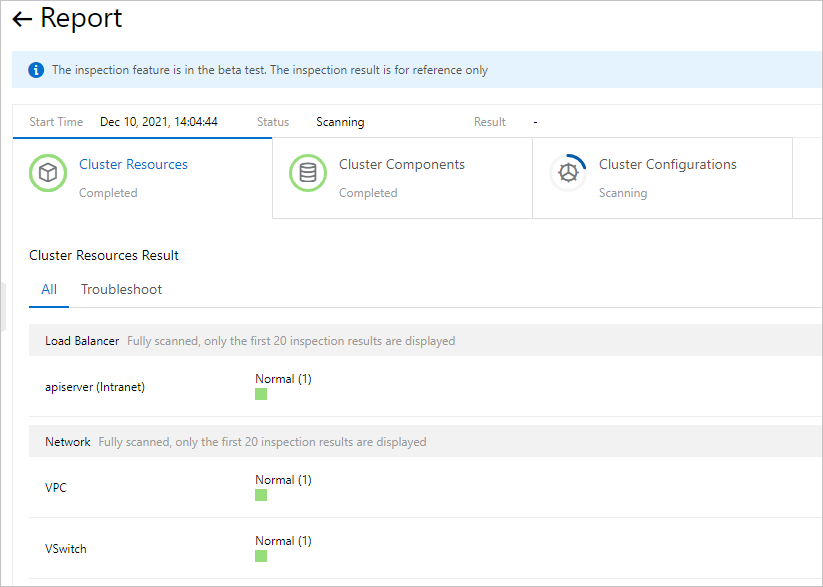Container Intelligence Service (CIS) provides the cluster check feature. You can use this feature to check whether your cluster meets the requirements for updates or migration before you get started. This topic describes the cluster check feature.
Prerequisites
A Container Service for Kubernetes (ACK) cluster is created. For more information, see Create an ACK managed cluster.
The cluster runs as expected. You can log on to the ACK console, navigate to the Clusters page, and then check whether the cluster is in the Running state.
Table of contents
Introduction to cluster check
The cluster check feature of CIS provides various capabilities such as cluster update check, cluster migration check, component installation check, component update check, and node pool check. A precheck is automatically triggered by CIS before a cluster is updated or migrated, a component is installed or updated, or a node pool is updated. The operation is performed only if the cluster passes the precheck. You can also manually trigger a cluster check without specifying any parameters to check the resources, components, and configurations of your cluster and view optimization suggestions. We recommend that you periodically check and maintain your cluster to mitigate potential risks.
Procedure
The procedures for cluster update check, component check, cluster migration check, and node pool check are similar. In the following section, a cluster update check is performed as an example to demonstrate how to work with the cluster check feature.
Log on to the ACK console. In the left-side navigation pane, click Clusters.
On the Clusters page, click the name of the cluster that you want to manage and choose in the left-side navigation pane.
In the left-side navigation pane of the CIS console, choose and click Start.
In the Upgrade Check panel, read the warning, select I know and agree, and then click Start.
On the Upgrade Check page, you can view brief information about the update check. You can also click Details to view the progress of the cluster update check on the Report page.
View the report
After the cluster update check is complete, you can fix issues based on the suggestions displayed on the Report page.
The report displays the following flags:
Normal: No actions are required.
Warning: Confirm the severity of each issue. Troubleshoot the issues that may cause cluster anomalies.
Error: Troubleshoot the issues at the earliest opportunity to avoid cluster errors.
You can click the flag of a check item to view information about the instance that is checked and the results. The results include the issues, the possible impact, and the suggestions on how to fix the issues. You can handle the issues based on the impact and suggestions. You can handle the issues based on the impact and suggestions.
Using deprecated APIs is considered an exception in a cluster update check. Security risks exist when you use deprecated APIs. For more information about how to handle this issue, see Update an ACK cluster or separately update the control planes and node pools of an ACK cluster.
